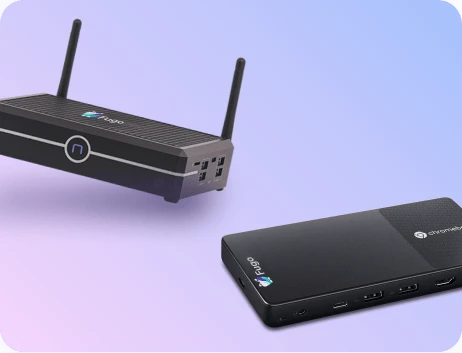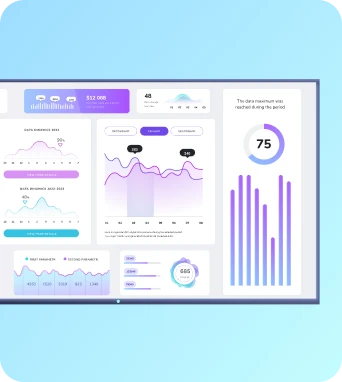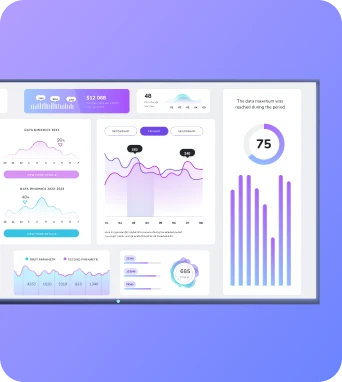AR (Augmented Reality) signage
AR (Augmented Reality) signage uses camera input, spatial tracking and computer vision to overlay digital content onto physical displays or the surrounding environment, producing contextual, interactive layers. It enhances TV dashboards and workplace screens with dynamic, data-driven overlays and experiential touchpoints that integrate into content management systems such as Fugo.ai.
What is AR (Augmented Reality) signage?
Technical foundations: spatial tracking, rendering pipelines and data layers
AR signage depends on three technical foundations that signage network managers must consider: accurate spatial tracking, efficient rendering pipelines on edge players, and robust data-layer integration. Spatial tracking can be achieved using marker-based approaches, where fiducial markers affixed to a display or environment provide precise anchor points for overlays, or using markerless SLAM (simultaneous localisation and mapping) techniques that build a sparse 3D model of the environment from camera frames. For a TV dashboard application, marker-based anchoring is often sufficient and more deterministic: a small printed marker placed on a conference-room display enables reproducible placement of KPI overlays or interactive controls, while SLAM is preferable in retail or wayfinding scenarios where fixed markers are impractical and the AR content must adapt to changing viewpoints. Rendering pipelines must be tuned for the constraints of signage players. Many digital signage players run on system-on-module hardware or compact Android/ChromeOS appliances; on-device GPUs vary significantly. Effective AR signage implementations use lightweight shaders, texture atlasing and adaptive resolution scaling so overlays remain smooth without monopolising CPU resources. For example, an edge player rendering a live overlay of stock-ticker annotations on a 4K TV may downscale the overlay buffer to 1080p, composite it with the native video feed and upscale selectively for text clarity. This approach preserves battery or thermal limits on fanless players while keeping the main display content intact. Data-layer integration ties the visual layer to meaningful context. AR signage frequently consumes real-time streams — occupancy sensors, calendar APIs, point-of-sale events, or analytics from people-counting cameras — and maps those values to parameters in the rendering engine. A Fugo.ai deployment might push a JSON payload to a device with positional metadata, prompting the player to highlight a particular product in augmented space when inventory levels fall below a threshold. Ensuring secure, low-latency transport and consistent schema between CMS, analytics services and edge clients is essential to avoid visual stutter, misplacement of overlays or stale information on critical dashboards.
Deployment and integration: implementing AR signage across signage estates
Deploying AR signage across a distributed signage estate requires coordinated planning across IT, content teams and facilities. Start by auditing player hardware and camera availability: not every player supports camera input or has a GPU capable of real-time compositing. In many installations the pragmatic approach is to designate AR-capable players — typically modern Android boxes, Intel NUC-class PCs or WebXR-enabled devices — and reserve specific screens for AR experiences. A phased rollout might begin with a pilot in meeting rooms or a single retail aisle where controlled lighting and fixed mounting reduce environmental variability. Fugo.ai and similar CMS platforms play a central role by managing device groups, distributing the AR-capable player software, and pushing configuration profiles that include anchor definitions, asset bundles and telemetry endpoints. Common pitfalls include underestimating network bandwidth for streaming camera data, neglecting latency implications on interactive overlays, and failing to manage privacy considerations for any video capture. To mitigate these risks, employ edge processing whenever possible so raw camera frames do not traverse the WAN; instead transmit only metadata or compressed, anonymised analytics back to central systems. Monitoring must encompass both application-level health and perceptual metrics: track frame rates of the overlay renderer, latency between data update and visual change, anchor fidelity metrics and error rates reported by edge SDKs. Regular calibration routines, automated via scheduled tasks pushed from the CMS, keep marker-based anchors aligned and compensate for drift. Optimisation is continuous and often content-driven. Use adaptive asset strategies where the CMS selects lighter-weight assets under constrained conditions, swap complex 3D models for 2D billboards when GPU load rises, and prefetch data bundles for scheduled AR scenes to avoid runtime fetch failures. Consider use cases in Fugo.ai such as overlaying room utilisation metrics on door-side displays, which benefits from calendar integrations and short-lived AR overlays, or retail promotions where product metadata from an ERP is linked to AR callouts; in both examples the CMS is responsible for scheduling, permissioning and secure token exchange so devices can render AR content reliably and in compliance with organisational policies.
Final Thoughts on AR (Augmented Reality) signage
Keep the learning going...
API integration (for signage)
API integration (for signage) is the programmatic connection between a digital signage platform and external systems, enabling automated content, data feeds, device control, and status reporting. It uses standard web APIs, webhooks, or SDKs to push JSON payloads, pull data, and synchronise playlists and player configurations across a signage estate.
API-based content triggers
API-based content triggers are automated signals sent to a digital signage platform that instruct players or dashboards to fetch, update, or replace content. They use webhooks, REST APIs or GraphQL endpoints to translate external events and data into immediate, contextual changes on displays across signage networks and workplace dashboards.
Aspect ratio correction
Aspect ratio correction is the process of adjusting media and layout to match the native width-to-height proportions of a display, using scaling, cropping, padding or letterboxing. In digital signage it prevents distortion, preserves composition and ensures consistent presentation across screens, dashboards and mixed-player networks.



